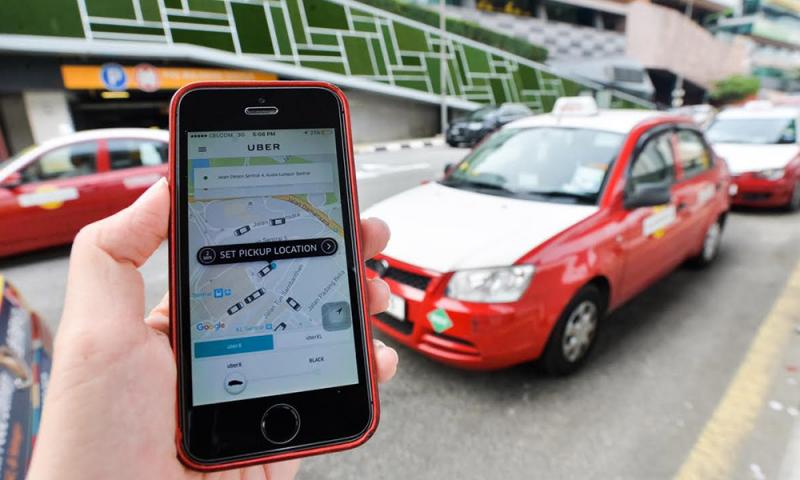With the passing of the amendments to the Land Public Transport (LPT) Act 2010 and the Commercial Vehicles Licensing Board (CVLB) Act 1987 in the Dewan Rakyat on July 27, e-hailing service providers will be given up to one year to adjust to the regulations stipulated by the law.
In essence, e-hailing drivers will be required to meet conditions similar to those placed on conventional taxi drivers, such as displaying driver’s identification card, undergo mandatory medical checkups, a car registered as a public service vehicle, pass annual vehicle inspections, and have proper insurance covers.
As for e-hailing and taxi drivers, they will be covered under the Self-Employment Social Security Act 2017 enforced in June, and is compulsory for all drivers to be registered by end of the year. But they will have to pay between RM157.20 and RM592.80 annually.
Those who failed to do so will be barred from renewing their public service vehicle licence, and could also be charged in court. If found guilty, they may be fined up to RM10,000, jailed up to two years, or both.
Null and void
All private vehicle motor insurance policies expressly state that cover will be null and void if used for carrying fare-paying passengers. Without amendments to existing policies, there is no insurance cover for third party injuries, which is required by law.
If so, e-hailing drivers would be in contravention of the Road Transport Act 1987 and also expose themselves to huge claims by those injured or next-of-kin of those killed.
If they were at fault in a collision, they would have to pay costly compensation for causing damage to other vehicles, apart from having their own-damage claim rejected.
Contrary to popular belief, passengers in metered taxis and hired cars (non-metered taxis) are not insured, but taxi motor insurance policies include passenger liability cover.
In the event, passengers are injured in a taxi and the driver was at fault, passengers would have to sue the taxi driver and wait for compensation awarded by the court, which could be paid by the insurer as the driver must be in full compliance with the terms and conditions.
Premium pricing
As for limousine taxis (teksi mewah), the premium to cover legal liability to four passengers was RM78 annually under the old Motor Tariff and RM240 for vehicles licensed under hire and drive (kereta sewa pandu). From this month onwards, premium rates for comprehensive and third party fire and theft covers have been liberalised, allowing individual insurers to determine premium pricing.
However, premium rates for the third party cover only will continue to be subjected to tariff rates. As such, the General Insurance Association of Malaysia, better known by its Malay acronym PIAM, should provide guidelines to the public, unless they are barred by the Malaysia Competition Commission.
If not, it could just tabulate the rates offered by the 22 general insurance companies so that the public could compare them easily to promote competition, as it would be an arduous task to check with one insurance company after another.
In April, it was reported that all taxi licences will be reduced to three classes viz: metered taxi, hire car (non-metered taxi) and limousine taxi. With e-hailing regulated, will these private vehicles be classified as e-hailing taxis?
The first two categories are vehicles painted in taxi colours and are allowed to pick up street-hailing passengers. The latter two are similar to other private vehicles, with limousines for pre-booked customers and e-hailing for on the spot requests.
Although Grab and Uber enjoy a near duopoly in the local market, there are around 15 local taxi apps available for customers to choose from, but they would not be popular as long as taxi rates are higher than private cars.
Untapped market
The untapped market is limousine taxis and other vehicles operated by tour companies. E-hailing vehicles are allowed up to 10 passengers giving tour operators the option to licence tour vans under bas persiaran (tour buses) in Peninsular Malaysia, with an added option as hire and drive vehicle in Sabah and Sarawak, or as a private vehicle under e-hailing nationwide.
Excise duty would be exempted if licensed under bas persiaran but not as private vehicle, whereas exemption is granted for hire and drive vehicles manufactured or assembled by Proton or Perodua.
Insurance premiums were very high under the old Motor Tariff, the rates being RM26, RM102.50 and RM122.10 for every RM1,000 for private vehicles, limousine taxis and hire and drive vehicles respectively, and the difference is even greater for the first RM1,000.
An app could be created for tour vans and cars allowing passengers to book for a specific vehicle that has been pre-arranged but in full compliance with e-hailing regulations.
But it has to start with ensuring that all e-hailing vehicles are insured as required by law.





